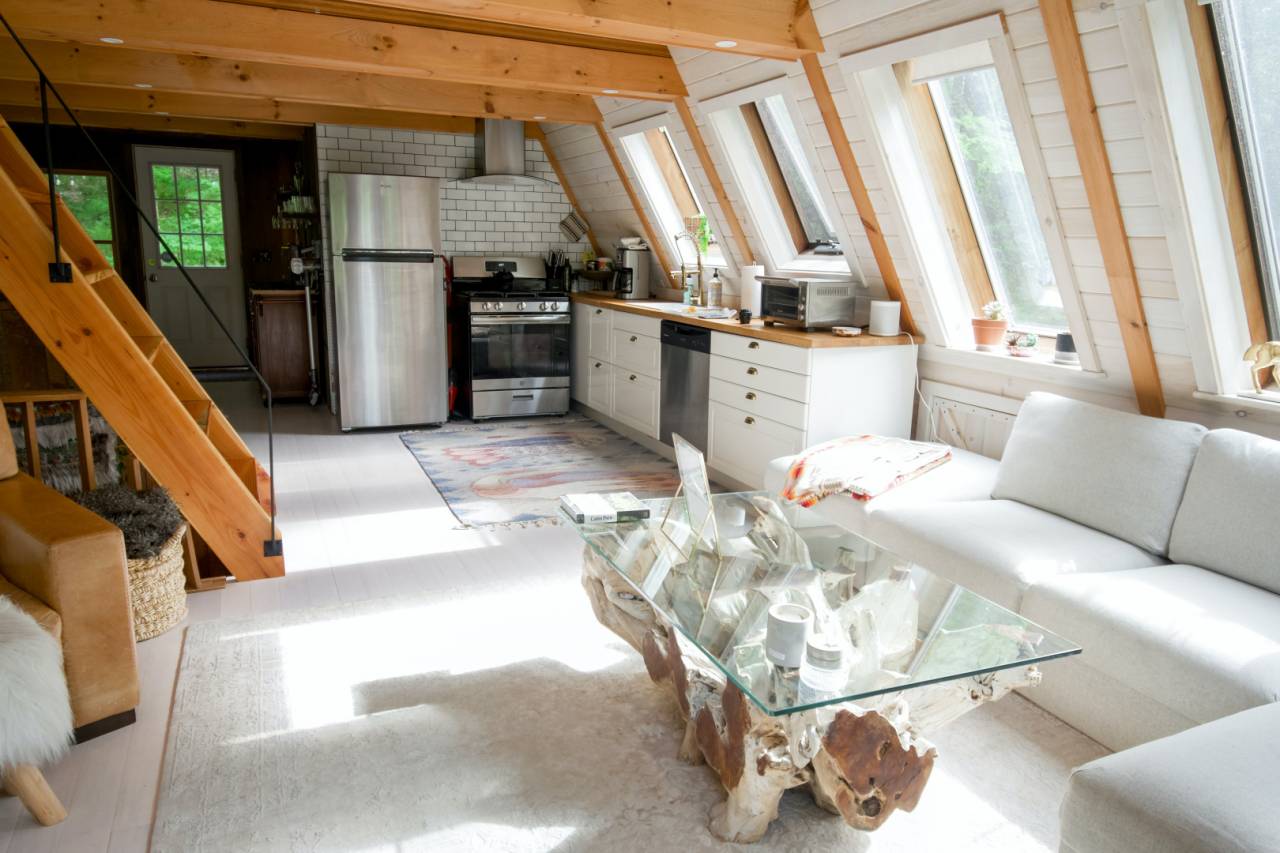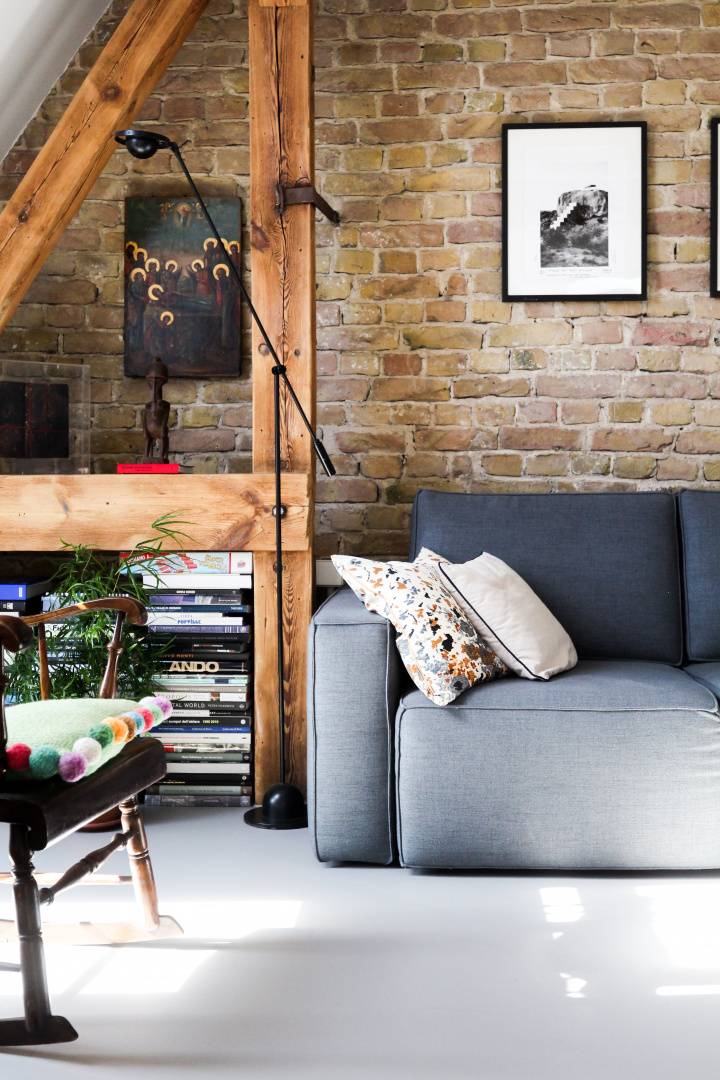Vaulted Ceiling Design Tips And Tricks
Vaulted ceilings have been growing in popularity in recent years. But what are they, exactly? A vaulted ceiling is a type of ceiling that is curved or arched, giving the appearance of being higher than it actually is. They are often used in churches and other large, open spaces because of their ability to make a space feel larger and more grand. But they can also be used in homes, and there are a number of benefits to having one.
Vaulted ceilings are an architectural feature that adds height and drama to any room. They're also a great way to add character to a space. But how do you build a vaulted ceiling on your own? Here are some tips for creating a beautiful vaulted ceiling in your home.
The first thing you need to know about vaulted ceilings is that they are made up of two parts: the rafters and the trusses.
To start building a vaulted ceiling, you'll need to determine where the rafters will go. This is usually determined by the size of the room and the location of the windows. Once you've figured out where the rafters should go, you'll need to figure out what kind of trusses you'll use. There are several different kinds of trusses available, each with its own advantages and disadvantages.
Rafters are the vertical supports that hold up the roof. They are usually made from wood, metal, or concrete.
If you're going to build a vaulted ceiling yourself, you'll need to make sure that you choose the right type of trusses. You'll also need to decide how much weight you want to support. A typical vaulted ceiling weighs between 1,000 pounds and 2,500 pounds.
Trusses are horizontal beams that connect the rafters together. They are usually made of steel or aluminum.
There are two main types of trusses used in building vaults: open web and closed web. Open web trusses are more common because they allow for easy access to the interior of the structure. Closed web trusses are less likely to collapse under heavy loads.
You will also need to make sure that the trusses are strong enough to support the weight of the roof.
To determine the strength of the trusses, use the formula W = πD2L/12 where D is the diameter of the truss and L is the span length. If the truss is made up of 2x4s, then the diameter would be 4 inches and the span length would be 12 feet. Plug these numbers into the equation and divide by 12 to find out how much weight the truss can support.
Once you have determined what type of material you would like to use for your rafters and trusses, you will need to decide where you want them located.
In order to make sure that the trusses are properly spaced, measure the distance between each truss and mark the center point with a pencil. Then, draw a line connecting the two points. Repeat this process until you have marked every truss.
What are vaulted ceilings and what are their benefits?
A vaulted ceiling is a roof that is supported by arches or vaults. This type of ceiling has many benefits, including:
- Increased Space - A vaulted ceiling can make a room feel larger because it doesn't have any vertical walls.
- More Natural Light - A vaulted ceiling allows more natural light to enter the room, which can make it feel brighter and more spacious.
- Increased Property Value - A vaulted ceiling can add value to your home and make it more attractive to buyers.
- Better Acoustics - A vaulted ceiling can improve the acoustics in a room, making it more ideal for entertaining or listening to music.
If you're considering adding a vaulted ceiling to your home, there are a few things you should keep in mind. First, you'll need to have enough headroom to accommodate the height of the ceiling. Second, you'll need to factor in the cost of materials and labor. And finally, you'll need to make sure that the structure of your home can support a vaulted ceiling.
If you're ready to add a touch of elegance to your home with a vaulted ceiling, contact a local contractor today.
How to pick the perfect vaulted ceiling for your home
When it comes to picking the perfect vaulted ceiling for your home, there are a few things to take into consideration. The first is the style of your home. Vaulted ceilings come in many different styles, so you'll want to choose one that will match the overall look and feel of your home.
The next thing to consider is the size of your home. Vaulted ceilings can make a space feel larger, but they may not be right for every room. If you have a small room, a vaulted ceiling may make it feel even smaller.
Finally, you'll need to decide if a vaulted ceiling is right for you. Vaulted ceilings are not for everyone – they can be quite expensive to install and they require more maintenance than standard ceilings. But if you're willing to put in the extra work, a vaulted ceiling can add a lot of character and style to your home.
The different types of vaulted ceilings and which one is right for you
There are different types of vaulted ceilings that you can choose from, depending on your needs and preferences. Here are a few of the most common types:
- Cathedral ceiling – This type of vaulted ceiling is the most popular, and it's often used in homes with high ceilings. It has a very dramatic look, and it can make a small room feel larger.
- Barrel ceiling – This type of vaulted ceiling is curved, which gives it a more traditional look. It's often used in homes with lower ceilings to make them feel taller.
- Cross vault ceiling – This type of ceiling is perfect for homes with a lot of character. It features intersecting arches, which create a very striking look.
- Dome ceiling – A dome ceiling is perfect for anyone who wants a luxurious, elegant look in their home. It's often used in formal settings, such as ballrooms or banquet halls.
- Coffered ceiling – A coffered ceiling is a great way to add interest to a room. It features a series of square or rectangular panels that are recessed into the ceiling.
- Tray ceiling – A tray ceiling is another popular option for homes with high ceilings. It features a raised center panel that's surrounded by a lower border. This creates the illusion of height, and it's also a great way to add architectural interest to a room.
- Waffle ceiling – A waffle ceiling is made up of a series of square or rectangular panels that are separated by beams. This gives the ceiling a grid-like appearance, and it's often used in contemporary settings.
- Gypsum board ceiling – A gypsum board ceiling is a type of false ceiling that's made from plasterboard. It's a popular choice for homes because it's easy to install and it provides a clean, finished look.
- Wooden beam ceiling – A wooden beam ceiling is a great way to add rustic charm to your home. It features exposed beams that are often made from reclaimed wood.
- Tin tile ceiling – A tin tile ceiling is a great way to add vintage flair to your home. It features metal tiles that are arranged in a pattern on the ceiling. Tin tile ceilings were once very popular in homes, and they're making a comeback in recent years.
Now that you know about the different types of vaulted ceilings, you can decide which one is right for your home. Keep in mind that the ceiling height will play a big role in your decision. If you have a low ceiling, then you'll want to choose a type of vaulted ceiling that won't make the room feel too cramped. And if you have a high ceiling, then you can go with a more dramatic option.
How to decorate a vaulted ceiling
The height and shape of a vaulted ceiling can be a beautiful asset in any room, but it can also be tricky to decorate. Here are some tips for making the most of your vaulted ceiling:
- Use tall furniture. Since a vaulted ceiling extends upwards, it's the perfect opportunity to use tall pieces of furniture to add drama and visual interest. Opt for a tall bookcase, entertainment center, or headboard to make the most of the space.
- Hang curtains high. Curtains hung high on a wall can help to camouflage the fact that the ceiling is vaulted. Be sure to use long curtains that reach all the way to the floor to create a sense of height and drama.
- Decorate the walls. The walls of a room with a vaulted ceiling can feel a little lost, so it's important to decorate them well. Add some interesting artwork or use a bold color on the walls to help them stand out.
- Use low-hanging lighting. Pendant lights and chandeliers are a great way to add light to a room with a vaulted ceiling without making the space feel too closed in.
- Add texture. Adding texture to the walls and ceiling can help to create a more cozy feeling in a room with a vaulted ceiling. Try using wallpaper or fabric on the walls, and adding a rug or tapestry to the floor.
FAQs about vaulted ceilings
- What are vaulted ceilings?
Vaulted ceilings are ceilings that are higher in the center than at the edges. They are often used in churches and other large, open spaces to make the area feel larger. They can also be used in smaller rooms to add some visual interest. - How are vaulted ceilings made?
Vaulted ceilings are made by constructing a curve or series of curves in the ceiling material. This can be done with plaster, drywall, or other materials. - What are the benefits of vaulted ceilings?
There are several benefits to using vaulted ceilings in your home. First, they can create the illusion of more space, which is especially helpful in small rooms. They can also add visual interest to a room and make it feel more luxurious. Vaulted ceilings can also be more comfortable to live in than flat ceilings, as they allow for more air circulation. - What are the disadvantages of vaulted ceilings?
There are a few potential disadvantages to using vaulted ceilings. First, they can be more expensive to construct than flat ceilings. They also may not be suitable for all rooms in your home, as they can make some rooms feel cramped. Finally, if you have vaulted ceilings, it is important to be aware of the increased risk of leaks and water damage.
If you're considering adding vaulted ceilings to your home, there are a few things you should keep in mind. First, consider the cost and whether you are willing to pay more for the added space and visual interest. Second, think about the climate in your area and whether vaulted ceilings would be too hot or too cold. Finally, be sure to have a professional inspect your home to ensure that the ceilings are structurally sound before making any changes.
Categories: Construction, Interior Design, Home Improvement | Authored by: RE DESIGN | Posted: 11/18/2022


